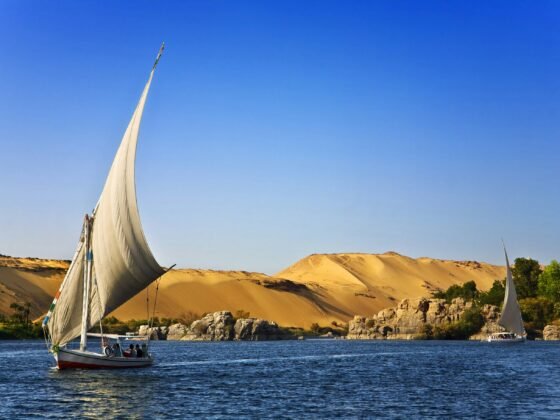PureTravel Says: Italy is a land of endless beauty, rich history, and vibrant culture. With sights that span the beginnings of Western civilization, the country offers travelers a unique opportunity to explore the roots of European history while indulging in the pleasures of modern life. Whether you’re wandering through ancient ruins, savoring world-class cuisine, or cycling through picturesque landscapes, Italy promises an unforgettable experience. It is a country chosen by many foreigners who are looking for nice weather, rich history and multiple possibilities for employment.
Traveling by train is a breeze, allowing you to seamlessly explore everything from bustling cities to serene coastal towns. The Amalfi Coast’s breathtaking routes and Rome’s historic center provide some of the most spectacular sightseeing opportunities in the world. But Italy is more than just a visual feast; it’s a place where history, culture, and adventure come together to create a truly immersive experience.
Full disclosure: The author lived for five years in the Garfagnana region of northern Tuscany so is a big fan of Italy!
Holiday Highlights
Culture & History
Italy is a treasure trove of cultural and historical landmarks. Museums across the country house incredible collections of artifacts, archaeological finds, and world-renowned artworks. In Rome, the Galleria Borghese and the Vatican Museums are must-visits, showcasing masterpieces by Caravaggio, Bernini, and more. Florence’s La Torre di Pisa and the Medici’s Palazzo Pitti offer glimpses into the grandeur of Italy’s past, while the ruins of ancient Rome remain powerful symbols of the empire’s former glory.
The most popular city destinations in Italy:
1. Rome
Rome, the Eternal City, is a must-visit for history enthusiasts and art lovers alike. The city is home to iconic landmarks such as the Colosseum, where gladiators once battled, and the Pantheon, a marvel of ancient architecture. Vatican City, an independent state within Rome, houses St. Peter’s Basilica and the Sistine Chapel, featuring Michelangelo’s renowned ceiling. The Roman Forum offers a glimpse into the heart of ancient Rome, while the Trevi Fountain invites visitors to toss a coin for good luck. Rome’s bustling piazzas, charming neighborhoods like Trastevere, and world-class museums like the Capitoline Museums ensure that every corner of the city tells a story.
2. Florence
Florence, the cradle of the Renaissance, is a city of unparalleled artistic and architectural treasures. The Uffizi Gallery showcases masterpieces by Botticelli, Leonardo da Vinci, and Michelangelo, while the Galleria dell’Accademia is home to Michelangelo’s iconic statue of David. The Florence Cathedral, with its magnificent dome by Brunelleschi, dominates the city’s skyline. Wander through the historic Ponte Vecchio, a medieval bridge lined with jewelry shops, or visit the Palazzo Pitti to explore the opulent residences of the Medici family. Florence’s vibrant cultural scene, stunning gardens, and picturesque streets make it a city that inspires and enchants.
3. Venice
Venice, a city built on water, is one of the world’s most unique destinations. The Grand Canal, lined with centuries-old palaces, offers a romantic backdrop for gondola rides. St. Mark’s Square is the heart of Venice, featuring the awe-inspiring St. Mark’s Basilica with its intricate mosaics and the towering Campanile. The Doge’s Palace, a masterpiece of Gothic architecture, showcases the opulence of Venice’s past as a powerful maritime republic. The city’s labyrinthine canals and narrow alleys lead to hidden gems, from quaint cafes to artisan shops. Venice’s rich history, breathtaking architecture, and artistic heritage make it a city like no other.
4. Milan
Milan, Italy’s fashion and financial capital, is a city that blends modernity with history. The iconic Milan Cathedral (Duomo), with its intricate Gothic façade, is a must-see, offering panoramic views from its rooftop. The nearby Galleria Vittorio Emanuele II is one of the world’s oldest shopping malls, featuring luxury boutiques and elegant cafes. Milan is also home to Leonardo da Vinci’s masterpiece, “The Last Supper,” housed in the Convent of Santa Maria delle Grazie. The city’s vibrant arts scene includes the renowned La Scala opera house and contemporary art galleries. Milan’s sophisticated charm, cutting-edge fashion, and rich cultural offerings attract visitors from around the globe.
5. Naples
Naples, a city with a rich history and vibrant culture, is the gateway to the Amalfi Coast and the ruins of Pompeii. The city is famous for its historic center, a UNESCO World Heritage site, where narrow streets are lined with churches, palaces, and bustling markets. Naples is also the birthplace of pizza, and a visit isn’t complete without sampling an authentic Neapolitan pizza. The National Archaeological Museum houses an impressive collection of artifacts from Pompeii and Herculaneum. Overlooking the Bay of Naples, the Castel dell’Ovo and Castel Nuovo offer stunning views of the city and the sea. Naples’ energetic atmosphere, historic sites, and culinary delights make it a fascinating destination.
6. Turin
Turin, a city of elegance and innovation, is known for its refined architecture, historic cafes, and rich automotive heritage. The Mole Antonelliana, a striking 19th-century building, houses the National Museum of Cinema and offers panoramic views from its spire. The Royal Palace of Turin and the nearby Palazzo Madama are testaments to the city’s regal past. Turin is also home to the Shroud of Turin, a religious relic housed in the Cathedral of Saint John the Baptist. The city’s leafy boulevards, grand piazzas, and the Po River add to its charm. Turin’s blend of history, culture, and innovation makes it a captivating destination.
7. Bologna
Bologna, known as “La Grassa” (The Fat One) for its culinary traditions, is a haven for food lovers and history buffs. The city’s medieval towers, such as the Asinelli and Garisenda, offer spectacular views over the red-tiled rooftops. Bologna’s historic center is home to the world’s oldest university, founded in 1088, and the beautiful Piazza Maggiore, surrounded by medieval and Renaissance buildings. The Basilica of San Petronio, with its unfinished façade, is one of the largest churches in the world. Bologna’s food scene is legendary, with traditional dishes like tagliatelle al ragù (Bolognese sauce) and tortellini taking center stage. The city’s vibrant atmosphere, rich history, and delicious cuisine make it a must-visit.
8. Pisa
Pisa is world-renowned for its Leaning Tower, an architectural marvel that draws millions of visitors each year. The tower is part of the Piazza dei Miracoli, a UNESCO World Heritage site that also includes the Pisa Cathedral and the Baptistery, both exquisite examples of Romanesque architecture. Visitors can climb the Leaning Tower for a unique perspective of the city and the surrounding Tuscan landscape. Beyond the tower, Pisa boasts a charming historic center with medieval palaces, picturesque squares, and vibrant markets. The Arno River runs through the city, offering scenic walks along its banks. Pisa’s iconic landmarks and historic charm make it a delightful stop on any Italian itinerary.
9. Verona
Verona, the city of Romeo and Juliet, is steeped in romance and history. The city’s most famous attraction is Juliet’s House, where visitors can see the legendary balcony and leave love notes on the courtyard walls. Verona’s Roman Arena, one of the best-preserved ancient amphitheaters, hosts world-class opera performances in the summer. The historic center, a UNESCO World Heritage site, features stunning examples of medieval and Renaissance architecture, including the beautiful Piazza delle Erbe and Piazza dei Signori. The Adige River winds through the city, offering picturesque views from the Ponte Pietra. Verona’s timeless beauty and romantic ambiance make it a favorite among travelers.
10. Siena
Siena, a medieval gem in the heart of Tuscany, is known for its stunning architecture, rich history, and the famous Palio horse race. The city’s centerpiece is the Piazza del Campo, a unique shell-shaped square that hosts the Palio twice a year. Siena’s Gothic cathedral, the Duomo, is adorned with intricate marble floors and striking frescoes by Renaissance masters. The city’s historic center, a UNESCO World Heritage site, is a maze of narrow streets and red-brick buildings, preserving its medieval character. Visitors can also explore the Palazzo Pubblico, with its towering Torre del Mangia, offering panoramic views of the surrounding countryside. Siena’s charm, history, and traditions make it a must-see in Tuscany.
Trekking
Italy’s varied terrain makes it a prime destination for trekking enthusiasts. Whether you’re following a pilgrimage route from Rome, hiking through Tuscany’s rolling hills, or exploring the rugged coastlines of the Cinque Terre, you’ll find that Italy’s natural beauty is as captivating as its historical landmarks. The Amalfi Coast, with its dramatic cliffs and azure waters, offers some of the most picturesque hiking trails in the world.
Cycling
Cycling in Italy is a dream come true. The country’s well-maintained roads and respectful drivers make it a paradise for cyclists of all levels. Whether you’re pedaling through the narrow streets of a charming village or climbing the challenging passes of the northern mountains, the stunning landscapes and rich history of Italy will make every ride unforgettable. Tuscany’s rolling hills and vineyards, in particular, offer some of the most scenic cycling routes in the world.
Water Sports
With over 5,000 miles of coastline, Italy is a top destination for water sports enthusiasts. From swimming and sailing to diving and windsurfing, the crystal-clear waters of the Mediterranean offer endless opportunities for adventure. The Italian Riviera, the Amalfi Coast, and the lakes of northern Italy are particularly popular spots for water-based activities. Whether you’re exploring the underwater world off the coast of Tuscany or sailing on Lake Garda, Italy’s waters are as inviting as they are beautiful.
Winter Sports
Italy’s Alpine regions are world-renowned for their winter sports facilities. The Italian Alps and Dolomites offer some of the best skiing, snowboarding, and cross-country skiing in Europe. Resorts like Cortina d’Ampezzo and Madonna di Campiglio attract winter sports enthusiasts from around the globe. In addition to skiing, visitors can try their hand at ice hockey, bobsledding, and snowshoeing in these pristine mountain landscapes.
Climbing
Rock climbing in Italy offers a diverse range of challenges, from the towering peaks of the Dolomites to the sea cliffs of the Amalfi Coast. The Dolomites, in particular, are a climber’s paradise, with routes that cater to all skill levels. Lake Garda and Lake Como also offer excellent climbing opportunities, while Muzzerone provides thrilling sea cliff climbs near Naples.
National Parks and Conservation
Italy’s national parks are a testament to the country’s commitment to preserving its natural heritage. These protected areas offer a glimpse into the diverse ecosystems that make Italy unique, from the Alpine peaks to the Mediterranean coastlines.
Gran Paradiso National Park
Nestled in the Alps, Gran Paradiso National Park is Italy’s oldest national park, established in 1922. It is home to the iconic ibex, which was once on the brink of extinction. Conservation efforts have led to the successful reintroduction of this species, and today, visitors can spot ibex, chamois, and golden eagles in their natural habitats. The park also boasts a network of hiking trails that offer breathtaking views of the surrounding mountains.
Cinque Terre National Park
Cinque Terre National Park is a UNESCO World Heritage site that protects the stunning coastal landscape of the Ligurian Riviera. The park is known for its colorful villages perched on cliffs, terraced vineyards, and crystal-clear waters. Conservation efforts focus on maintaining the traditional agricultural practices that have shaped the landscape for centuries. Hiking trails connect the villages, offering spectacular views of the Mediterranean.
Abruzzo, Lazio and Molise National Park
This park is a haven for wildlife, including the endangered Marsican brown bear, Apennine wolf, and chamois. Conservation projects in the park aim to protect these species through habitat restoration and anti-poaching initiatives. Visitors can explore the park’s rugged mountains, dense forests, and pristine rivers, all while contributing to the preservation of Italy’s natural heritage.
Stelvio National Park
Stelvio National Park, located in the heart of the Italian Alps, is one of the largest protected areas in Europe. The park’s diverse ecosystems range from alpine meadows to dense forests, providing a habitat for species like the golden eagle, red deer, and marmot. Conservation work here includes reforestation projects and efforts to mitigate the impact of climate change on the park’s glaciers.
Sila National Park
Situated in the southern region of Calabria, Sila National Park is known for its ancient forests, rolling hills, and rich biodiversity. Conservation efforts in the park focus on protecting its unique ecosystems, including efforts to reintroduce native species like the roe deer. The park’s scenic trails and pristine lakes make it a popular destination for nature lovers.
When to Go
The best time to visit Italy is from April to June and in late September to October. During these months, the weather is mild, and the crowds are smaller, allowing you to fully enjoy the country’s many attractions. Summer, from June to mid-September, is peak tourist season, with larger crowds and hotter temperatures, especially in August. If you’re planning a winter sports holiday, the ski season typically runs from December to March.
Italy is a destination that truly has it all—history, culture, adventure, and natural beauty. Whether you’re drawn to its ancient ruins, majestic mountains, or pristine coastlines, Italy promises an experience that will stay with you long after your journey ends.
Photo by Dan Novac on Unsplash












